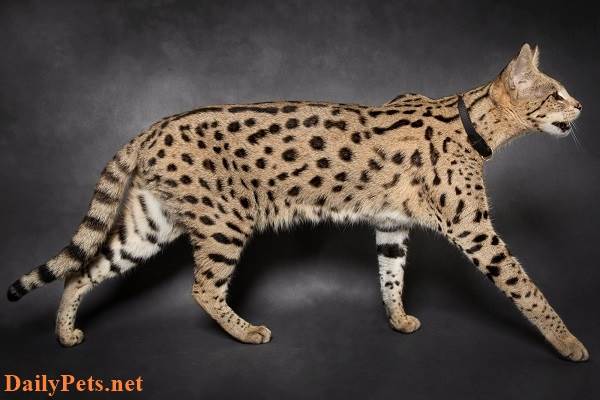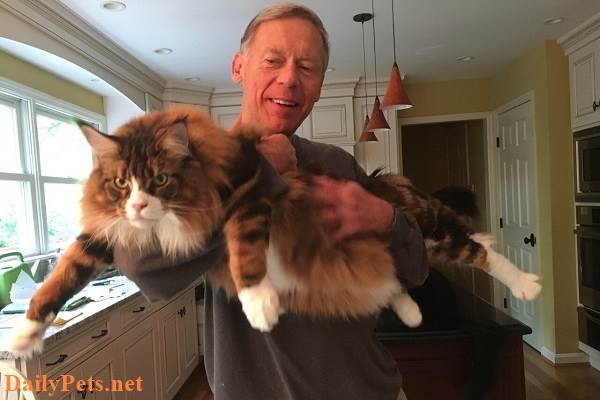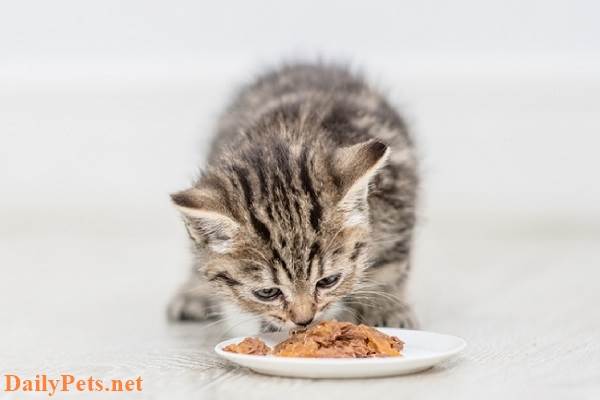However, Norwegian Forest cats are extremely friendly and sociable.
Join DailyPets.net to learn more about the Norwegian Forest cat breed’s origin, characteristics, and care below.
Origin and history of the Norwegian Forest cat breed
Many people say that Norwegian forest cats have existed for a long time, possibly thousands of years ago. They even appear in myths as a breed of large cats in Northern Europe. It is possible that Viking sailors raised this species of cat on ships to catch mice.
Originally, the Norwegian wildcat lived in the forests of Norway for many centuries, but then they were used extensively in Norwegian barracks for their hunting abilities until they were discovered in the early part of the 20th century by cat lovers.
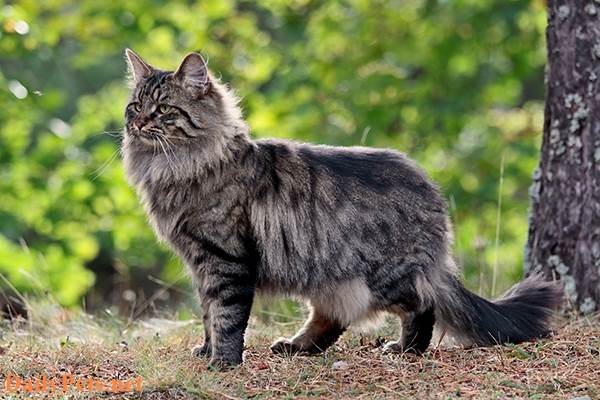
Norwegian Forest cat.
The Norwegian Forest Cat was later recognized as a world cat breed in 1930. The lovers of this Norwegian wildcat also specially established the Norwegian wildcat club and held a show in Oslo’s capital city of Oslo. this country
The Norwegian Forest Cat was later recognized as an official cat breed in other Nordic countries such as Sweden (1978) and England (1989)… and became a popular and loved cat breed.
Physical characteristics of the Norwegian forest cat
Large size, shiny, smooth, very long, and dense fur are the outstanding characteristics of the Norwegian forest cat. A special feature is that they have a double coat consisting of a dense inner coat and a wool-like outer coat, which has an insulating effect.
More specifically, the length of the Norwegian cat’s coat also changes flexibly with the weather. This means you will see your cat’s fur a little longer in the winter than on hot summer days. Perhaps this is a feature that helps them adapt to the cold climate in Northern Europe. They have a mane, along with their long fur, making them look like a lion (quite similar to the Maine Coon cat).
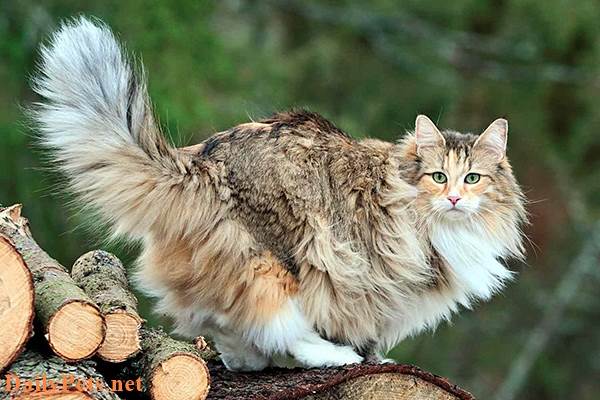
Norwegian Forest cat similar to the Maine Coon cat.
The coat of the Norwegian Forest cat comes in many different colors, such as smoky gray, dark black, cream, silver, blue, or the color of the Siamese cat. There are Norwegian Forest cats with single-colored fur, and there are also cats with multi-colored fur combined.
Normally, Norwegian forest cats weigh about 4.5-9kg, 23-30cm tall and 30-46cm long. Their bodies are big, strong, and muscular. The “large” appearance is covered with dense fur, but the Norwegian cat is agile and loves climbing.
Norwegian Forest Cat Personality Traits
Despite its somewhat “cold” and calm appearance, the Norwegian Forest Cat is friendly and sociable. They are sociable with their friends and close to their owners, and love to be caressed and caressed by their owners. That’s why Norwegian forest cats are so sweet.
Originally a breed of wild forest cat, the Norwegian Forest Cat is intelligent and likes to explore the world around it, especially things up high like bookcases. Because they like such high places, they are active, agile, and love climbing.
The Norwegian Forest Cat loves interaction and play, but this breed also tends to be fearful and doesn’t get along well with dogs or other energetic pets.
How to take care of Norwegian Forest cats
Regarding the care of Norwegian Forest cats, you need to pay attention to their diet, fur care, and health. Besides, it is necessary to understand some common diseases in this cat breed to help children prevent diseases and stay healthy.
Nutrition
Different nutritional regimens depend on the different ages and sizes of Norwegian Forest cats.
For newborn babies, you only need to breastfeed them exclusively. It is necessary to supplement enough nutrients so that the milk supply is always abundant and guaranteed for them.
When they reach the age of learning to eat, they should still be given hot milk every 2-3 meals combined with soft foods. Adult cats only need to eat 2 meals a day
Because Norwegian Forest cats are very active, need a lot of energy, and live in cold climates, they need to be supplemented with adequate protein.
You should feed them foods rich in protein, such as beef, chicken, and lean pork. Besides protein, they also need to be supplemented with fats, starches, vitamins, and vegetables.
Hair care
The Norwegian Forest cat’s coat needs a lot of grooming, especially in the spring when the cat’s hair falls out.
In the summer, you should bathe the bosses to become more “beautiful,” but you need to dry them immediately after bathing because their fur is very thick; if wet, it can seep into the body, leading to illness.
Norwegian Forest cats also need to have their teeth cleaned at least once a week to prevent periodontal disease.
Some common diseases
Norwegian Forest cats are quite healthy but can also suffer from heart and kidney diseases. In addition, there are some common diseases in this cat that you need to keep in mind:
- Hypertrophic cardiomyopathy
- Glycogen storage disease IV
- Hip dysplasia
- Hereditary muscle disease
You must take your cat for regular check-ups to detect and treat diseases promptly.
Norwegian Forest cat lifespan
Norwegian Forest cats, known for their robust health and hardy nature, typically have a relatively long lifespan compared to other cat breeds. On average, a well-cared-for Norwegian Forest cat can live for 12 to 16 years or even longer. However, Norwegian Forest cat lifespans can vary depending on genetics, diet, exercise, and the quality of care they receive.
To ensure your Norwegian Forest cat has the best chance at a long and healthy life, provide regular veterinary check-ups, a balanced diet, a safe and stimulating environment, and plenty of love and attention. Proper care and attention to their needs can contribute to your Norwegian Forest cat’s happy and extended life.
Norwegian Forest cat price
The price of a Norwegian Forest cat can vary depending on various factors, including the cat’s age, pedigree, appearance, and the breeder’s reputation. Norwegian Forest cats are known for their striking looks and friendly personalities, which can influence their price. On average, you can expect to pay anywhere from $600 to $1,200 for a Norwegian Forest kitten.
If you’re interested in a show-quality Norwegian Forest cat with a top-notch pedigree and ideal conformation, the price ranges from $1,200 to $2,500 or more.
Keep in mind that prices may vary based on location and demand. Additionally, it’s crucial to choose a reputable breeder who prioritizes the health and well-being of their cats. Be prepared to invest in the initial purchase price and ongoing expenses like food, grooming, veterinary care, and other cat-related needs.
